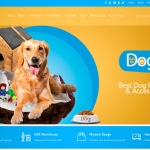The "Winning Product" Myth: 16 Reasons Why Your E-commerce Store is STILL Struggling
- December 4, 2024
- News

[ad_1]
We all know the mantra: find winning products, ride the sales wave, e-commerce domination. But here's the thing: even if you DO get lucky with a star product, those victories can be short-lived if you haven't addressed the core issues hiding beneath the surface of your business.
Think of it this way – a great product is like a stellar athlete drafted onto a losing team. Talent alone can't guarantee championships.
So, are you struggling with low sales, dwindling interest, and a gnawing sense that something's just not clicking? Before you throw in the towel on your entire product lineup, let's unpack some less obvious (but insanely common) culprits holding your e-commerce business back.
1. The Market Mismatch
It's a painful truth: even the coolest product will flop if nobody actually wants it. Maybe your passion project was always a little niche, or your audience research was off. Let me break it down in a way that will resonate: selling high-end snowboards in Miami probably isn't a path to riches. Understanding your market is as crucial as the products themselves.
2. The Invisible Target
Who are you really selling to? “Everyone” isn't an answer. If you haven't nailed down your ideal customer – their age, interests, the problems they face – you're firing blindfolded. Generic marketing and vague product descriptions don't speak to anyone specifically, meaning they speak to no one.
3. The Whisper Campaign
Is anyone buzzing about your products? A sure sign of trouble is radio silence. No shares, low engagement, no reviews… crickets. That “word-of-mouth” effect everyone talks about? It won't happen if your products don't have that special ‘something' that sparks excitement.
4. The Missed Connection
Let's be honest, lots of products are ‘nice-to-have' but not life-changing. If you're not targeting a true pain point, something your customer desperately needs solved, their enthusiasm will be lukewarm at best. It's the difference between a quirky gadget and the must-have tool they swear by.
5. The Vanishing Act
The online marketplace is like a raging river. If you're not actively putting effort into standing out, you'll be swept away in the current. Bland product photos, generic branding, and an ‘if you build it they will come' attitude get you nowhere nowadays. Your shop needs an identity and a way to break through the noise.
6. The Language Barrier
Your words count for more than you might think! Confusing descriptions, overused buzzwords, and focusing purely on features instead of benefits will kill sales faster than bad reviews. Think transformation, not specs. How will your product make your customer's life better? That's what they want to hear.
7. The Trust Deficit
In a world of scams and shady sellers, customers are wary. If you haven't invested in building trust – think testimonials, high-quality product imagery, social proof, guarantees – people will hesitate to pull out their wallets. Building trust is essential for turning one-time buyers into a loyal tribe.
8. The Obstacle Course
A poorly designed website, broken links, slow checkout… it doesn't matter how good your product is if the buying process is a nightmare. Impatience reigns supreme online. You have mere seconds to convince someone to stay before they bounce to a competitor.
9. The Budget Black Hole
Are your ads eating your profits? Don't throw money down the drain! Effective advertising depends on targeting the right people and making every dollar count. If your returns aren't balancing your ad spending, rethinking your strategy is urgent, not optional.
10. The Fickle Flame
Okay, so you can attract attention… but can you keep it? If your focus is only on acquiring new customers without considering the lifetime value, you're fighting a losing battle. Repeat customers are the foundation of a sustainable business – have a plan to nurture them.
11. The Wrong Toolkit
Making business decisions based on gut feelings over real data is a recipe for disaster. The beauty of e-commerce is that you have so much information at your fingertips! If you're not utilizing analytics to track sales, trends, and audience behavior, you're missing out on opportunities (and stumbling into hidden traps).
12. The Bottleneck
“Order now and receive your product in… eventually?” We've all been spoiled by speedy shipping. If your fulfillment process lags, customers will notice. Delays, inconsistent delivery times, and damaged products erode trust and leave a bad taste in people's mouths, hindering the chance of them ordering again.
13. The Echo Chamber
It's natural to get excited about your own ideas, but they aren't foolproof. Seeking customer feedback early and often can save you from sinking time and resources into something that just doesn't click with the market. Listen, iterate, and don't get too attached to a product before the outside world validates it.
14. The Trend Lag
E-commerce moves fast. Were you finally ready to launch your fidget spinner empire just after the craze died? Jumping on trends too late or not being proactive about spotting rising demand means you're constantly one step behind. Keep an eye on popular search terms, emerging marketplaces, and competitor innovations.
15. The Price Miscalculation
Pricing has a crazy amount of psychology baked into it. Too high, and you risk turning away price-conscious shoppers. Too low, and people might worry about quality (or assume you aren't making enough profit to provide customer support). Pricing strategically means factoring in costs AND the perceived value.
16. The Mismatched Medium
Are you pumping all your marketing effort into Facebook when your ideal customers are primarily hanging out on TikTok? Just because a platform is popular doesn't mean it's where your people are concentrated. Don't spread yourself too thin – focus on where your audience spends their time.
Getting Closer to the Root
Tackling these challenges isn't a quick fix, but it sets the stage for smarter product decisions. Ask yourself:
- Am I truly addressing a market need?
- Have I honed in on the ideal customer?
- Am I creating a memorable, trustworthy brand?
- Do I have efficient systems in place for sales and fulfillment?
- Am I listening and adapting based on feedback and data?
Winning products are fantastic, but even they can become victims of these business struggles. A strong foundation will take you a lot further than pure luck in the wild realm of e-commerce.
[ad_2]
Source link












